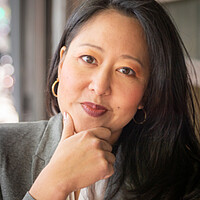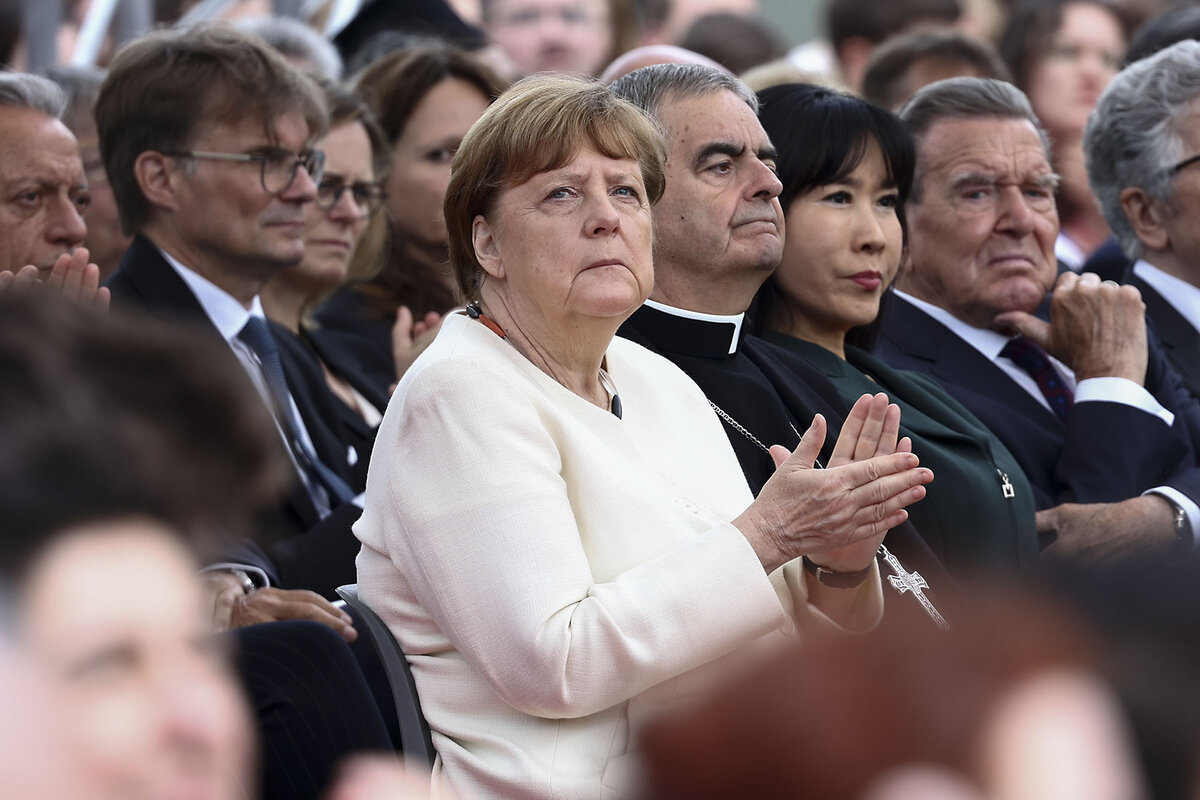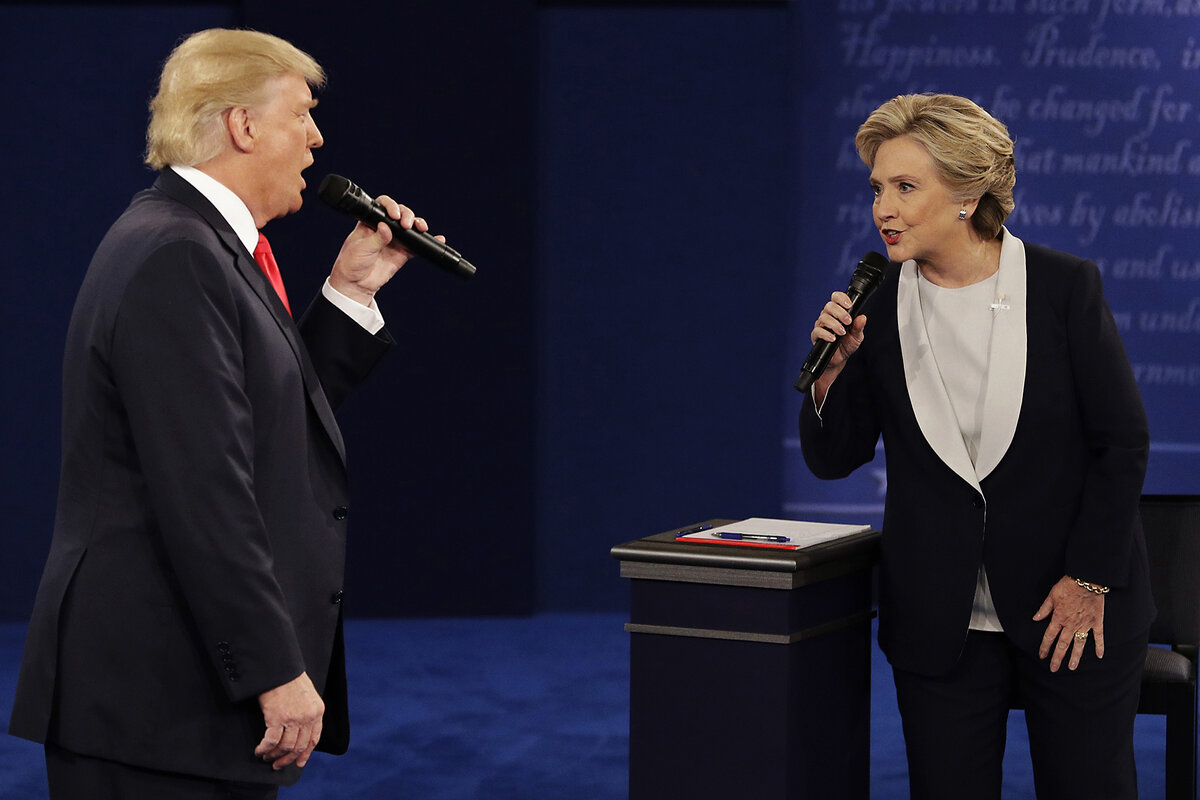Harris would be the first female US leader. Europe has had many. What gives?
Loading...
| Berlin
No woman has ever been president of the United States. And Kamala Harris is only the second in history to be a major political party’s nominee for the post.
However, Germany has already been led by Angela Merkel and the United Kingdom by Margaret Thatcher, Theresa May, and Liz Truss. Giorgia Meloni, Mette Frederiksen, Ingrida Šimonytė, and Evika Siliņa are the current heads of government for Italy, Denmark, Lithuania, and Latvia, respectively. And Ursula von der Leyen was just tapped for another term in one of the European Union’s most powerful positions, president of the European Commission.
So why has female political leadership become so normalized in Europe, when it remains so rare, particularly at the highest levels, in the U.S.?
Why We Wrote This
A story focused onThe United States achieved democracy before most European nations. But it still lags behind Europe in terms of female representation in leadership. Why the gap?
The answer, experts say, comes from a mix of factors embedded in both European and American media and culture. Partly it lies in Europe’s focus on work-life balance, gender quotas in government, and proportional representation – which allows parties to choose female leaders rather than the public needing to directly elect them.
Media treatment of women is also a significant factor. Around the globe, female candidates generally get fewer mentions than men, and when U.S. media do focus on female candidates, they are more likely to highlight personal traits rather than professional achievements. That can reinforce gender stereotypes and complicate how women politicians navigate the political environment.
“The difficulties that American female candidates face – it is a laundry list. It is so incredibly pervasive, the many ways in which they are challenged,” says Laurie Nsiah-Jefferson, director of the Center for Women in Politics and Public Policy at the University of Massachusetts Boston. “The focus is on physical appearance, tone, background. And voters are perfectly willing to vote for a man for a high office that they think is qualified, that they don’t necessarily like. But they’re not as willing to vote for women they think are qualified, that they don’t like.”
A supportive environment in Europe
European countries generally have strong welfare states, which emphasize economic safety nets, work-life balance, social equality, and other policies that help ease the path for women to run for office.
“The important difference is the structure of the welfare state, such as high-quality child care, high-quality public education, high-quality eldercare, and the kinds of things that are especially important for women in order to be able to have a working life and a family life,” says Lena Wängnerud, a political scientist at the University of Gothenburg in Sweden. The Scandinavian countries have particularly strong welfare states, she says, and women have also had the most success in achieving high political positions there.
Proportional representation – in which parties must gain only a plurality, rather than a majority of votes, to win the seat – also helps boost female politicians in Europe, she says. Under this system, parties can deploy strategies to run more than one candidate per district, or reserve “every second seat for a woman,” or some such gender quota to achieve higher levels of female representation, says Dr. Wängnerud.
Majoritarian systems like those in the U.S. and the U.K. “tend to have fewer women elected, because then women need to be not only the winning candidate for the party, but the winning candidate in the district,” she says.
Additionally, the first-past-the-post voting model used by the U.K. and the U.S. raises a financial barrier that particularly affects women, says Kristina Wilfore, an elections specialist and co-founder of the advocacy group #ShePersisted. “It takes $8.9 million to run for a congressional seat” in the U.S., and men are more easily able to tap sufficient fundraising networks, she says.
Media representations of female candidates also matter. In the U.S., media are more often privately owned enterprises with profit directives – and hence an incentive to be more sensational. This is in contrast with European countries like Germany, where many media houses receive state funding.
And while negativity and stereotyping is rampant everywhere, U.S. media might be more prone to repeating these kinds of messages about female candidates, argues Dr. Nsiah-Jefferson.
“There are huge levels of racism in Europe, you know, France, India, Germany, and everywhere else. My sense of the difference is, How much attention is this getting in the news? It doesn’t get as much of a media flurry as it does [in the U.S.].”
Overall, women everywhere also get fewer mentions in the media than their male counterparts. This “underreporting” leads to perceptions that make them seem less likely to win, writes Amanda Haraldsson, a social sciences researcher based in Vienna, in an email.
And in the U.S., when women do get media coverage, they are usually billed as new and unusual candidates who are made to seem very exceptional, “putting pressure on these female candidates to be perfect,” says Dr. Haraldsson.
“Think of [Alexandria Ocasio-Cortez] – any small misstep she takes will be given a lot more attention than a male counterpart, including clothing or makeup choices, or the type of emotion she displays.”
Sexism and media scrutiny
Despite Europe’s wide representation on the list of countries that have had women leaders, European female politicians still face a far-from-perfect landscape.
There’s a large variation across the Continent, with women in Scandinavian countries faring best. And when women in Europe do run for office, their treatment by the media and by society hasn’t always been positive.
When Annalena Baerbock was announced as the German Green party’s candidate to replace Chancellor Merkel in 2021, the gendered attacks began immediately. She was frequently targeted with sexist tropes and misinformation campaigns that claimed she would ban household pets and eliminate widows’ pensions.
The British tabloids have been notoriously sexist as well. In 2017, the Daily Mail published a picture of Nicola Sturgeon, the first minister of Scotland, and Ms. May, the British prime minister, sitting in knee-length skirts next to the headline “Never Mind Brexit, who won Legs-it!”
“Many European countries have seen women elected to the highest level of office, [but] sadly this does not mean that female candidates in Europe are much better off,” writes Dr. Haraldsson.
In terms of identity, Ms. Harris has more factors working against her than did 2016 presidential nominee Hillary Clinton, says Dr. Nsiah-Jefferson. “Women of color are twice as likely as white candidates to be singled out in terms of misinformation, disinformation, and also sort of these violent threats online. And on top of that, you’ve got the internet and social media at another level than when Hillary was running. You’ve got [right-wing social media platforms] Truth Social, Rumble – these particular sites are influential and somehow pipeline to mainstream media.”
On a positive note, sexist treatment of Mrs. Clinton actually had the effect of encouraging more political engagement among young women, says Dr. Haraldsson.
“So there is some hope that, both in America and Europe, young women can be politically activated when they see female role models treated in a sexist way,” she says, “and perhaps lead them to take the plunge into politics themselves in the future.”









